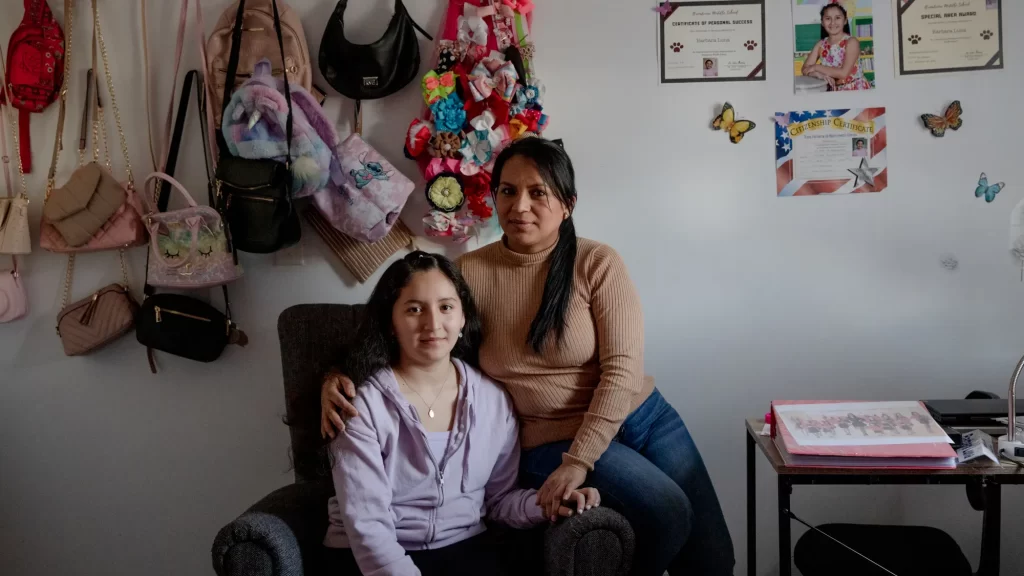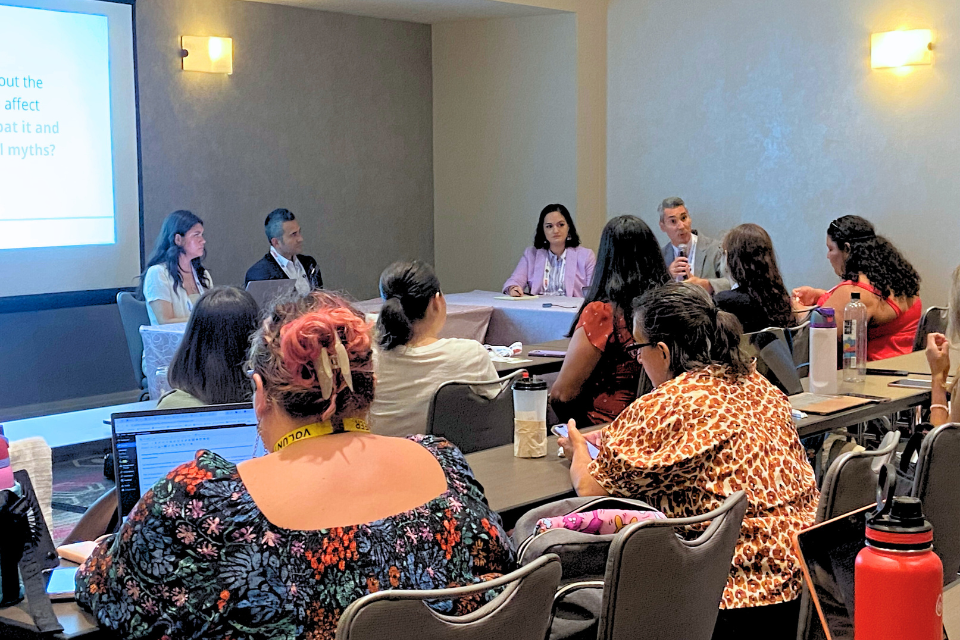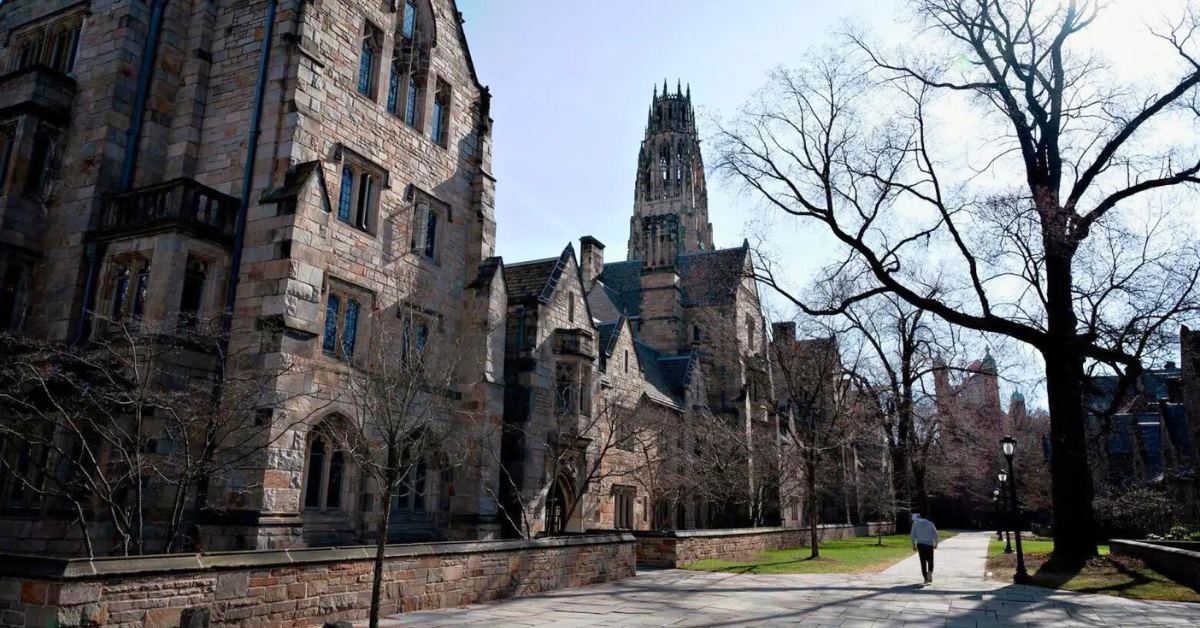Several years ago, Barbara Luna Merchan, who’s now 13, learned about a charter school that would open in Danbury. She begged her mom to enroll her when she was entering middle school.
She thought it would be an opportunity to finally feel safe at school away from bullying. She thought a smaller class size would change feeling invisible in the classroom. She thought a charter school would be a better space to keep learning English.
But Barbara Luna hasn’t had the chance to find out if the charter school would have been a better fit for her. Five years after it was approved by state officials, the Danbury charter school has yet to open.
“I want to try a different school that’s going to be better than the one I am at,” Barbara Luna told the CT Mirror. “I want to go [to a new school] that is the opposite of the one I go to now.”
The Danbury charter school has been caught in the middle of emotionally charged debates about whether it’s a good option for struggling students, particularly students of color, who make up about 94% of the children who attend charter schools in Connecticut and may need a more individualized approach to learning.
The issue is playing out across the state and the nation.
Weeks ago, a charter school in Middletown approved by the state Board of Education garnered hours of emotional debate among state board and community members about whether it would be a better option for students who said they’ve struggled with racial tensions at public schools.
Across the United States, charter school enrollment has more than doubled between 2009 and 2019, especially in states like California, Texas, Florida, Arizona and Michigan — five states that had the most charter schools in the country between 2020 and 2021. In Detroit, between 1995 and 2015, over 100 charter schools opened despite nearly 200 traditional public schools shutting down, according to reporting by VICE News.
Charter school advocates argue that the schools offer parents and students a choice and have unique characteristics that allow them to run independently from their home districts, providing more room for innovation in their curriculum and teaching styles.
Opponents counter that charter schools, in a sense, privatize public education as they strip away investments into local districts and offer only a select number of students the opportunity to potentially thrive in another school while others, who may be stuck on a wait list, are left without resources.
What makes Danbury unique in Connecticut is the intensity of the debate between the charter school’s opponents and supporters, as local organizations, teacher unions, state legislators and parents remain deadlocked over the best options for educating their children. The lack of compromise has contributed to the delay in the school’s opening since its approval over five years ago.
Most recently, of four approved charter schools in Connecticut, Danbury’s was the only one left out of the state budget endorsed by the Appropriations Committee this session, although a final budget is still in negotiations.
In Connecticut, which is home to 21 charter schools, no charter school has opened since 2015 after legislation changed the way the schools are approved — adding a larger role for legislators in the process. Connecticut is the only state in the country that requires legislative approval in the creation of charter schools, according to the National Alliance for Public Charter Schools.
But a new bill that passed out of two legislative committees this session might give future charter schools a chance to avoid being stuck in the same situation by removing the extra step in the approval process.
A different reality
The Merchans are one of what may be thousands of families across the state that have asked for school choice after struggling with language barriers, lack of support or an inability to succeed in the traditional public school system.
The family’s transition to the United States from Ecuador five years ago wasn’t easy.
They first settled in New York City, but moved to Danbury after learning about its diversity and wealthy neighboring towns. Barbara Luna’s mother, Evelyn, was also excited that her eldest daughter would be enrolled in what she heard was one of the country’s best education systems. She thought it would set her up for success to chase her dream of being a pediatrician one day.
“But the reality was something else,” said Merchan, who only speaks Spanish. Her expectations changed the first day she dropped her daughter off at school and learned her new classroom had what she estimated to be 30 to 35 children.
“I asked myself ‘How did they give this one teacher all of these students?’” Merchan said. “I started to realize the reality was different than my expectations and the things I had heard. It was hard for me to swallow.”
For months, Barbara Luna came home from school saying she felt invisible, like the teacher didn’t even know she was in the class.
“She told me ‘Mom, the teacher only focuses on the students who know English,’” Merchan said. “She was so sad. She didn’t even want to go to school anymore, but I told her no, that she had to go and she had to learn, but she felt they discriminated against her because she couldn’t speak English.”
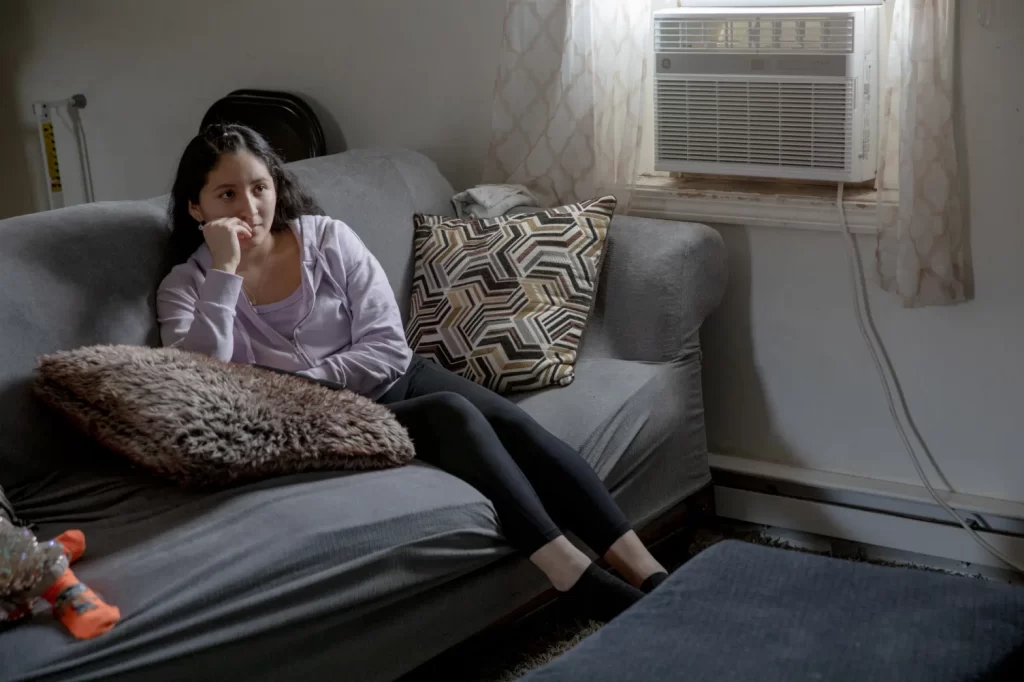
The COVID-19 pandemic worsened the feelings of isolation. Barbara Luna would sit at her computer and cry every day after Broadview Middle School transitioned to remote learning in early 2020.
Her normal seven-hour school day stretched several hours longer as she had to translate her recorded video lectures line-by-line to understand her lessons and homework.
“My teacher wasn’t really my teacher,” Barbara Luna said. “My teacher was Google Translate.”
Merchan would try to help her daughter with her schoolwork, then excuse herself to go to the bathroom and cry.
“I’d be cooking and I’d hear, ‘Mommy, I don’t understand this,’ and I felt hopeless because I don’t know English,” Merchan said. “I had the chance to learn it in my country, but I never took it seriously because I didn’t think I would need it. I never thought I would move to the United States. So I [would tell] my daughter she needs to do this. She needs to learn. I would see her eyes red [from crying] and it would make me frustrated that I couldn’t help her.”
For months, the family persevered. Barbara Luna developed her English skills, but her mother says it was because of her daughter’s efforts, not through school support.
When classes returned to in-person learning, new challenges arose.
Barbara Luna says she goes to school in fear most days.
“If you go into the bathroom, you see the girls smoking. You can’t go to the bathroom or relax or nothing like that. In the hallways, every time, you see people fight,” Barbara Luna said. “In the boys bathroom, they fight. It’s just a little weird because every time you go to school, you see things like that, and it’s bad.”
Nearly 160 children, or 14.2% of the students who attend Barbara Luna’s school have been suspended this academic year, according to state data. The figure is more than double the state average which sits at 6.5%. Last year, Broadview Middle School reported nearly 300 “incidents,” including 80 reports of fighting and battery and 32 verbal or physical confrontations.
School officials, including the school’s principal and the district’s superintendent, did not respond to requests for comment.
A cry for additional resources
Crowded hallways are a familiar sight at many schools in Danbury. The school district is home to over 12,100 students. Barbara Luna’s middle school educated 1,065 students last year, a 4% increase from its enrollment in 2020.
Between 2010 through 2020, Danbury’s population grew by 7%, trailing just behind Stamford and Norwalk for the largest number of people moving into a Connecticut city.
The city is limited to just one public high school, which educates nearly 3,600 students, and is the biggest high school in the state. The proposed charter school would serve students in grades six through 12.
In the last 10 years, Danbury High School’s total population increased by nearly 25%, or 712 students, including a rapid rise in the number of Latino students from about 36% of the total student body in 2013 to 59% this year.
At the high school, the number of English language learners nearly tripled this decade from 384 students to 917, according to data from the state.
Residents have argued there needs to be a solution to ease the city’s growing pains as its influx of Latino immigrants continues to rise.
But what that solution entails, especially for high school students, has been heavily debated.
The proposed charter school, which would be located in Danbury’s downtown area and teach up to nearly 800 students, received its initial approval in 2018 from the Connecticut Board of Education.
To date, the school remains unbuilt.
Prior to 2015, a charter school could begin recruiting students and building its campus as soon as it received approval from the state Board of Education. That year, however, a bill changed the process into a two-tier approval system, where the state Board of Education grants “initial” approval and then funding is approved by lawmakers. The state Department of Education said the change helped make the charter process more transparent.
“That second tier frankly kind of always existed to the extent that when the State Board approved the charter school — it received its full charter — but that didn’t mean that there was funding in place,” said Kathleen Demsey, the Department of Education’s chief financial officer. “The legislature at the time felt an enormous amount of pressure to fund the school, because the schools — once they got their charter — they would begin recruiting students, they had families who were engaged and wanting to go. … So the legislature decided to create this two step process to make it clear that the state board’s approval was an educational approval, and that the actual funding approval, the appropriation of funds, happened by the legislature.”
Still, since the 2015 legislation, no charter school has been built in the state. The Danbury school, and another in Norwalk, have been waiting for funding for over five years.
Charter school proposals have to undergo an extensive process before approval, including an analysis of the school’s curriculum, model and community need. There also must be public hearings to determine if there’s a demand and local support from constituents. Applications often take more than a year to be considered.
The 700-page application for the Danbury charter school was submitted in August 2017 and proposed an International Baccalaureate program, which focuses on preparing students for college. The application said the school would open with a sixth grade class of 110 students, and every year add a new class, eventually reaching a total of up to 770 students.
More than 170 people attended a public hearing for the school in March 2018, with 27 out of 37 residents who spoke in favor of the school. The application also had dozens of letters of support from local families, children, the city’s former mayor and several local representatives.
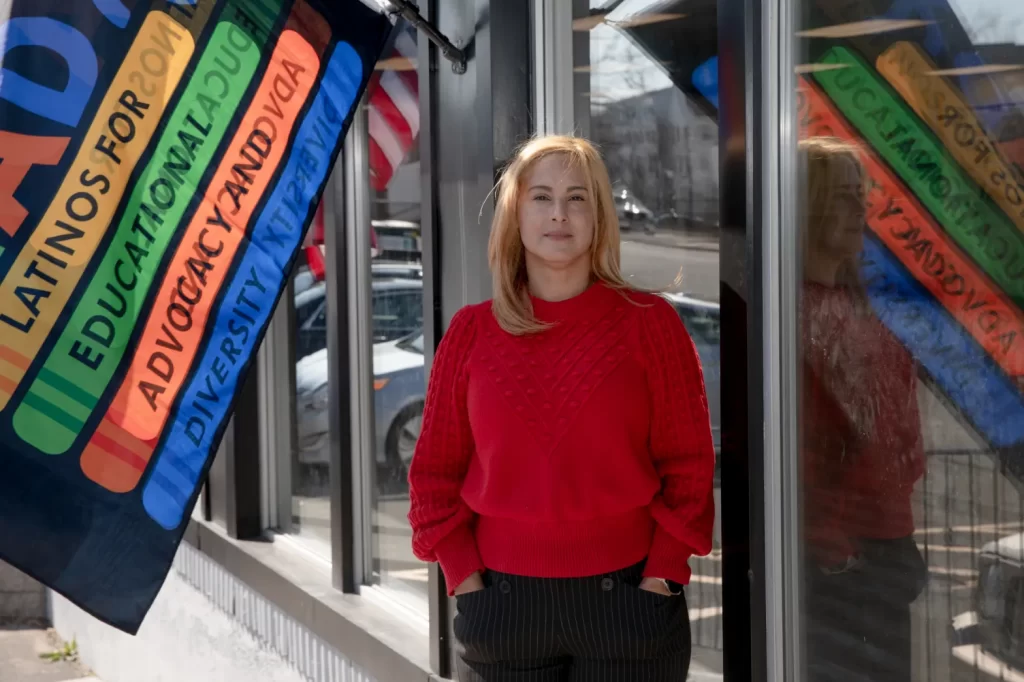
Written opposition mainly came from surrounding town’s superintendents who were concerned about funding.
“Bethel, like most Connecticut communities, has yet to receive our ECS allocation,” wrote Christine Carver of Bethel Public Schools in 2018. “While we understand that Charter School Programs are a separate fund, we believe that full funding of Connecticut’s 500,000 student public schools should be the state’s first priority.”
Leaders of the Region 9 district, which includes Easton and Redding, and the New Fairfield public schools also sent in letters.
Recently, the Department of Education acknowledged the state’s difficulty to fully fund its public schools and said it’s a “huge conversation” still being had between state leaders.
“There are bills in the legislature to accelerate full funding of the education cost sharing formula, but … the lens from which we direct resources is with the thought that the vast majority of funding goes to the highest need districts,” Demsey said. “The education cost sharing formula is not based on the cost of educating a child, and I think people forget the education cost sharing formula is designed to even the playing field to raise revenue at the local level to pay for education. And based on that, it does do that. Now can we argue should there be more money put into it? Yes, but the formula itself is a municipal tax aid. It is designed to even the playing fields.”
Alongside the letters from the neighboring districts’ superintendents, former Danbury Public Schools Superintendent Sal Pascarella did not provide direct comment on the charter school, but rather used his letter to ask questions about the school, including whether it came with no cost to the district, where it would be located, and if it was possible to require the school to proportionally represent the district’s large number of English learners.
Funding concerns
Despite its initial approval five years ago, the charter school in Danbury remains at the center of an emotionally charged debate. Advocates have spent this session heavily pushing lawmakers to fund the school and secure its spot in the governor’s budget, while opponents have fought for a second traditional public high school to be built.
The group Latinos for Educational Advocacy and Diversity, also known as LEAD, is one of the major proponents of the charter school. The group gathered hundreds of residents to testify in favor of the Danbury school at several public hearings this session.
The organization’s CEO, Jose Lucas Pimentel, moved to Danbury in the fifth grade and has lived in the area for more than 35 years. After going through the public school system, he shared similar sentiments as the Merchans, saying he felt unsupported.
“[The high school] was a place that had just so many holes,” said Pimentel, who later taught in a Bridgeport charter school. “I was a guy that needed a smaller environment, that needed support, that needed caring people to say, ‘Hey, you’re pretty smart,’ but really, it was like I was just another number.”
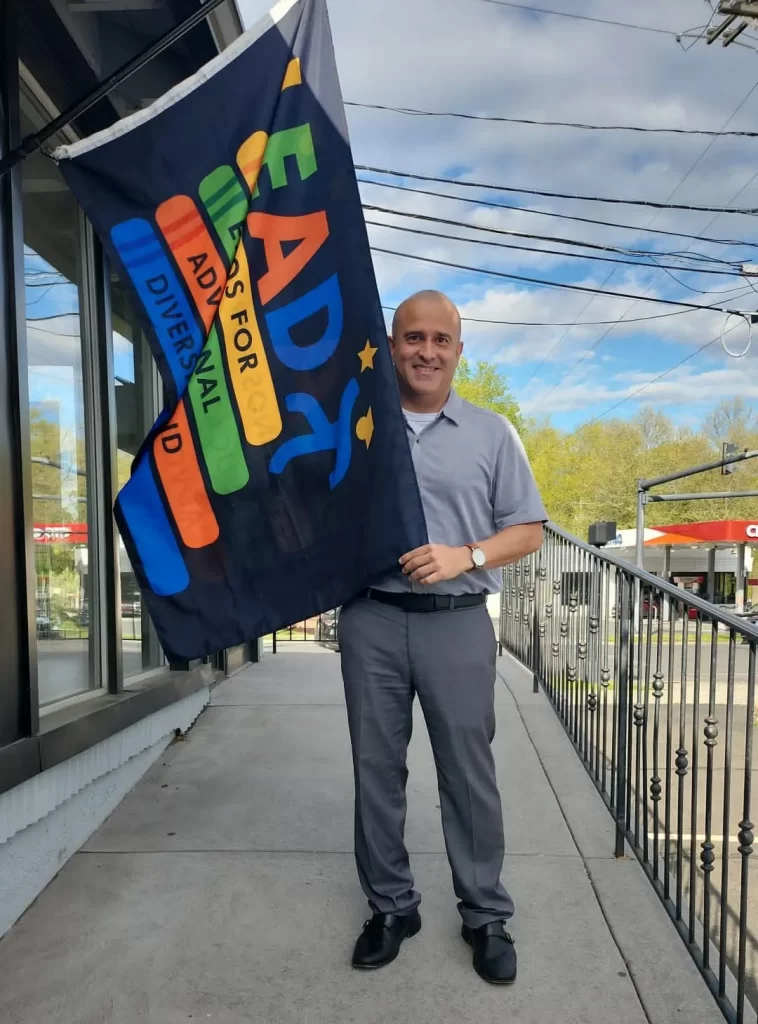
Although some opponents understand the appeal of a smaller school, many argue that it’s not a fair system because it will only serve a small number of students and leave others behind.
“We should invest in finding good solutions for the whole student population, as opposed to a charter school solution which would really only address a very small percentage of the student population,” said Sen. Julie Kushner, D-Danbury. “We have worked on that for a number of years and we are making significant progress. We had a bond referendum in June that was approved by the people of Danbury to build a new school, grade six through 12, and it will have room for 1,400 students, which is more than twice as big as the charter school proposal.”
About $164 million of a $208 million bond referendum will go toward renovating a building to house the Career Academy — the school Kushner mentioned — which will host “24 pathways” for students, including opportunities in Emerging Technologies & Entrepreneurship, Scientific Innovation & Medicine, Information & Cybersecurity, Professional & Public Service, Art, Engineering & Design and Communication & Design, according to a presentation from Danbury Public Schools.
The school is expected to enroll 1,400 students through a lottery system. Once enrolled, a student’s first year will be centered on career exploration, followed by essential courses then two years of specialized courses toward certification. The Career Academy was supposed to open in 2024, but is expected to be delayed by a year.
But advocates argue a charter school isn’t an “either or” option with the second high school, but an “and” option. They say the charter school won’t be a solution to all overcrowding concerns or displeasure with the traditional public school system, but opens up another choice for parents and students.
“Our school is unique in that it provides the option of an International Baccalaureate Program, which is probably the opposite of what the Career Academies would provide. [The] Career Academies is geared towards school-to-career and the IB program is geared very intentionally towards preparing kids for the rigors associated with college,” said John Taylor, who served as the executive director of Booker T. Washington Academy in New Haven and was later named the CEO of Elevate Charter Schools, which will manage the charter school in Danbury. “You’re giving parents a different option. The Career Academy is not any direct competition.”
The Department of Education added that choice schools, which includes charters, magnet and vocational schools, educate over 70,000 students, which “is not a small number of students that are served by these programs.”
The department also said that charter schools also often work hand in hand with their district to share what’s working best for students.
“We regularly highlight best practices, regardless of which type of public school you’re attending,” Demsey said. “So if it’s your local school district operated, or if that’s a magnet school, if it’s a charter school, if it’s the technical or vocational, … one of the things the department firmly believes is that we take where we find success, and we share that because I think everybody benefits from that regardless of what type of school they call themselves.”
Opponents further argue that a charter school would strip Danbury’s already struggling school system of needed financial resources.
“We are on a fiscal cliff. Our schools are overcrowded, understaffed and under-resourced. The additional costs the district would have to absorb in a charter school, or to open, would push our district and students right over that cliff and have devastating consequences for our schools,” Matthew Sweeney, a Danbury parent and school counselor, said at a state Board of Education meeting in April. “As it stands, we don’t have enough money to adequately staff and support the schools we already have. … There’s no way we can sustain the associated costs of a charter school, not to mention the loss of ECS funding … per student who enrolls in the proposed charter school.”
Sweeney noted the school district would have to absorb the costs of transportation and special education for charter school students, which would lead to a loss of millions of dollars throughout the years.
However, Demsey said that impression is wrong.
Connecticut charter schools are funded separately from traditional public schools, and although a public school district does have those responsibilities that Sweeney mentioned, it’s “not as simple as it sounds.”
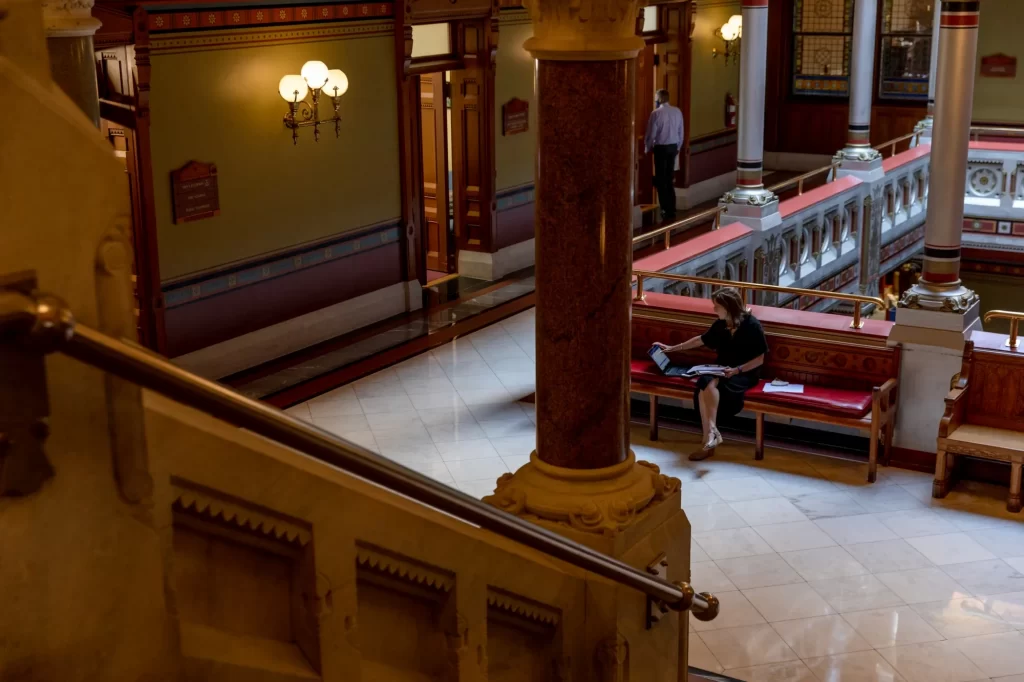
“Would Danbury not receive some revenue because those students attended the charter school? Yes, but by the same token, they are not incurring costs related to educating those students,” Demsey said. “I think in the end, you’re probably looking at something that’s almost cost neutral, because of the fact that if the children don’t go [to the charter], well, then [the home district has] to educate the children. And if there’s enough [students], now you start talking about needing additional classroom space, needing additional teachers. It sounds really easy to say, ‘Oh, we’re missing all that revenue,’ but the truth is that there would be a cost to the district if they were being educated in the district. That’s the other side of it that I think people don’t realize.”
The traditional public school district would fundamentally lose state funding, or ECS money, from the student who transferred because “the state would instead pay a per pupil grant to the charter school educating the student,” the Department of Education said.
“If a child enrolls in a charter school they would no longer count as a resident student in the home district’s Education Cost Sharing grant calculation,” said Eric Scoville, the department’s director of communications. “This is the same as students attending the CT Technical Education and Career System,” which are also known as vocational schools.
Legislation change could open doors for charters
Danbury is not alone in being caught in the middle of this debate.
Earlier this year, the state Board of Education granted approval to two additional charter schools: one in Middletown and another in New Haven.
The approval of Capital Preparatory Middletown Charter School garnered hours of debate at the March board meeting. Parents in attendance, mostly people of color, overwhelmingly favored the charter school. Yet, the Department of Education initially recommended the Board of Education defer its decision after receiving an influx of letters in opposition to the school the night before the meeting. The board overruled the department’s recommendation and granted the school its initial approval.
Four charter schools now wait in the pipeline for funding. All of them, except Danbury, were written into the Appropriations Committee version of the state budget earlier this month.
As currently written in the state budget, which passed out of the Appropriations Committee with a 40-12 vote, the Norwalk, Middletown and New Haven charter schools would be given $200,000 each next year, then in 2025, Norwalk would be given $2.1 million, Middletown $4.75 million and New Haven $937,500.
The budget, which is still being negotiated, prompted Rep. Rachel Chaleski, R-Danbury, to request a “surprise” amendment to add her city’s missing school before the committee voted to approve the budget. Chaleski’s amendment triggered a 90 minute recess, followed by an hour of testimony from two dozen state representatives who overwhelmingly voiced their support for the school, but were split between voting in favor of the amendment or voting with their party.
The amendment ultimately failed 33-20, but the Danbury charter school could still be written into the budget as lawmakers expect there to be a few more weeks of negotiations before a final budget is approved.
In the meantime, Senate Bill 1096, proposed this session by Sen. Doug McCrory, D-Hartford, makes an effort to clear the path for the creation of Connecticut charter schools and dial back on the 2015 law that required the two-step approval.
McCrory’s bill would return to a one-tier approval process and also start a separate state grant account “for the purposes of providing the initial funding for a local or state charter school that has been granted a new charter,” according to its language.
The bill had state representatives split along party lines before it passed 30-13 out of the Education Committee. It was then approved by the Appropriations Committee.
“These communities … who are underserved, marginalized, underrepresented and under-resourced … these [communities are] largely Black and brown children and families, and they’re poor, and they want another option,” McCrory said at the Education Committee’s March 24 meeting. “It’s time for us in this state to give our parents a choice and give these children a chance.”
Publisher’s Note: A Danbury charter school, approved but unfunded, causes tensions is an original story by the CT Mirror. CT Latino News partners with the CT Mirror in best serving the diverse Hispanic-Latino communities of Connecticut.

